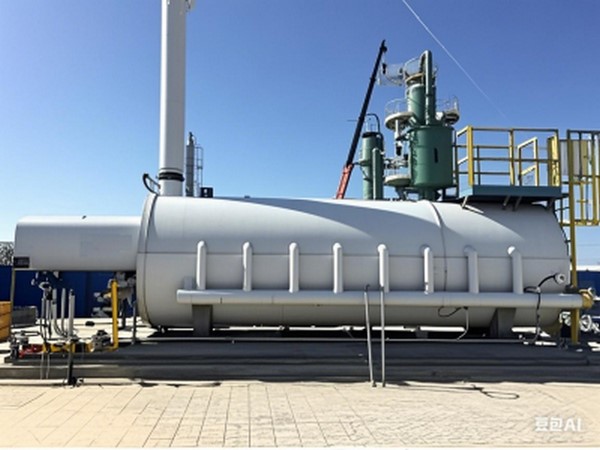Deskripsi
Key Features:
- Adaptive Temperature Control – Maintains ±1°C accuracy across 30–150°C range
- Energy Recovery Technology – Recovers 20–30% waste heat from gas turbines or engines
- Self-Cleaning Design – Automated descaling for prolonged heat exchanger efficiency
- Cloud-Connected Intelligence – Predictive analytics for hydrate risk mitigation
- Compact Modular Footprint – 50% smaller than conventional heating systems
Core Components:
Intelligent Heating Module:
- Multi-Pass Shell & Tube Heat Exchanger (ASME Section VIII certified)
- Electric/Combustion Hybrid Heater – Switchable between fuel types
- Phase-Change Thermal Storage – Maintains heat during power fluctuations
Smart Control System:
- IoT Sensors – Monitor gas dew point, pressure, temperature, and flow regime
- AI-Powered Controller – Predicts hydrate formation risks using reservoir models
- Digital Twin Integration – Simulates thermal performance under varying loads
Auxiliary Systems:
- Automatic Chemical Injection – Hydrate inhibitors (e.g., methanol, MEG)
- Explosion-Proof Enclosure – ATEX Zone 1/2 and IECEx certified
- Low-Emission Burner – NOx <30 mg/Nm³ (for combustion mode)
Working Principle:
-
Gas Inlet Analysis: Sensors detect gas composition, pressure, and temperature.
-
Risk Prediction: AI calculates hydrate formation potential using PVT data.
-
Adaptive Heating:
-
Electric Mode: Direct heating via resistance elements during low-demand periods.
-
Combustion Mode: Fuel-based heating for high-capacity requirements.
-
-
Heat Recovery: Waste heat from exhaust/flue gas is stored in phase-change materials.
-
Continuous Optimization: Digital twin adjusts parameters based on real-time pipeline conditions.
Performance Advantages:
- 40% Energy Savings vs. traditional line heaters
- Zero Hydrate Incidents – Predictive shutdowns prevent blockages
- 30% Lower Maintenance – Self-cleaning and corrosion-resistant materials
- 100% Remote Operability – Fully automated for unmanned stations
Applications:
- Gas condensate fields with high water content
- Subsea pipeline heating systems
- Shale gas well pads requiring intermittent heating
- LNG pre-cooling and boil-off gas management
Case Study: Arctic Gas Field Deployment:
- Challenge: Maintain 70°C in -40°C ambient for 20km pipeline
- Solution: Installed ICHS-5000 system with hybrid heating
- Results:
↗ Achieved 99.8% uptime over 3 winter seasons
↘ Reduced methanol consumption by 45%
→ Cut CO₂ emissions by 35% via energy recovery
Certifications & Standards:
- ASME BPVC Section VIII (Pressure Vessel Code)
- API 12K (Indirect-Type Oil Field Heaters)
- ISO 50001 (Energy Management Systems)
- SIL 2 (Safety Integrity Level)


Ulasan
Belum ada ulasan.